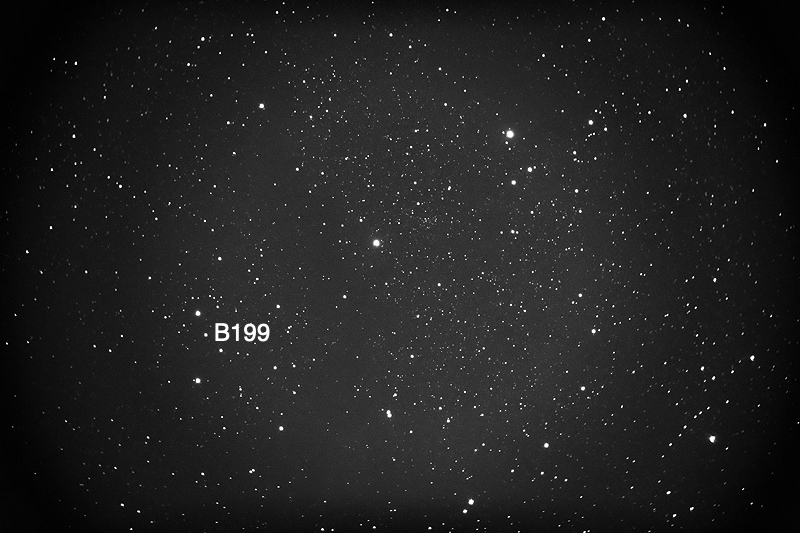Moon & Earthshine, More Barnard Objects
Posted: 5 December 2024
|
Open: Wednesday, 4 December 2024, 1810 MST Temperature: 69°F |
Session: 2044 Conditions: Clear |
Equipment:
12" f/8 LX600 w/StarLock
2" 24mm UWA eyepiece
Focal reducer
Camera:
iPhone 15 Pro Max
D850 DSLR
1818 MST: LX600 ON, StarLock OFF, High Precision OFF.
Viewed Venus, 102X.
Viewed the crescent Moon and Earthshine, 102X.
Took this handheld iPhone 15 Pro Max photo of the Moon with Earthshine near the planet Venus over the observatory.

1832 MST: The crescent Moon, Earthshine, and Venus. Cropped D850 DSLR image (f/2.8, 1/4sec, ISO 1600, FL 70mm, handheld).

Prepared the D850 for imaging and mounted it at prime focus + focal reducer.
Took these images of the Moon and Earthshine (ISO 1000, 1/400sec and 1 second, respectively).


Next, I slewed the 12" telescope to Deneb and SYNCed the AutoStar on Deneb. I then did some investigation of why my previous image of Barnard Object B199 had failed. In studying the reference image of B199 I realized that there are several components of B199 spread over several arc minutes of the sky. The portion I was trying to image was at Right Ascension 21h46m, not 21h40m as shown in the list of Barnard Objects. Once the Moon was lower in the southwestern sky I would use that RA (adjusted by -5' in RA, as previously determined).
1909 MST: High Precision ON.
Focused on Deneb, locked the telescope primary mirror, and slewed to my adjusted coordinates for B199.
1920 MST: StarLock ON.
Took the following StarLock autoguided images of Barnard Objects (dark nebulae), 30 seconds, ISO 6400.












The nebulosity in the image of B168 is the Cocoon Nebula.
2001 MST: StarLock OFF.
SYNCed on the star Aldebaran. Viewed M45 (Pleiades), 102X.
I then began observing, or trying to, these Barnard Objects, 102X: B207, B208, B209, B210, and B211. This is the status of my Barnard Objects Project:
![]()
Viewed Jupiter, 102X. The four Galilean Moons were visible.
2041 MST: LX600 OFF.
2049 MST: Took a Sky Quality reading.
|
Close: Wednesday, 4 December 2024, 2052 MST Temperature: 54°F |
Session Length: 2h 42m Conditions: Clear, SQM 20.94 |
Comments are welcome using Email. Please read the Email Etiquette guidance.
Cassiopeia Observatory Home Page
Copyright ©2024 Michael L. Weasner / mweasner@mac.com.
URL = http://www.weasner.com/co/Reports/2024/12/05/index.html
